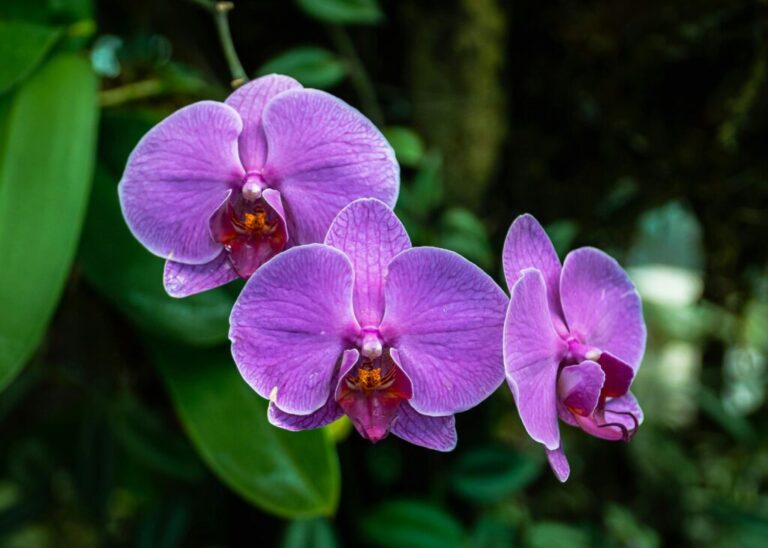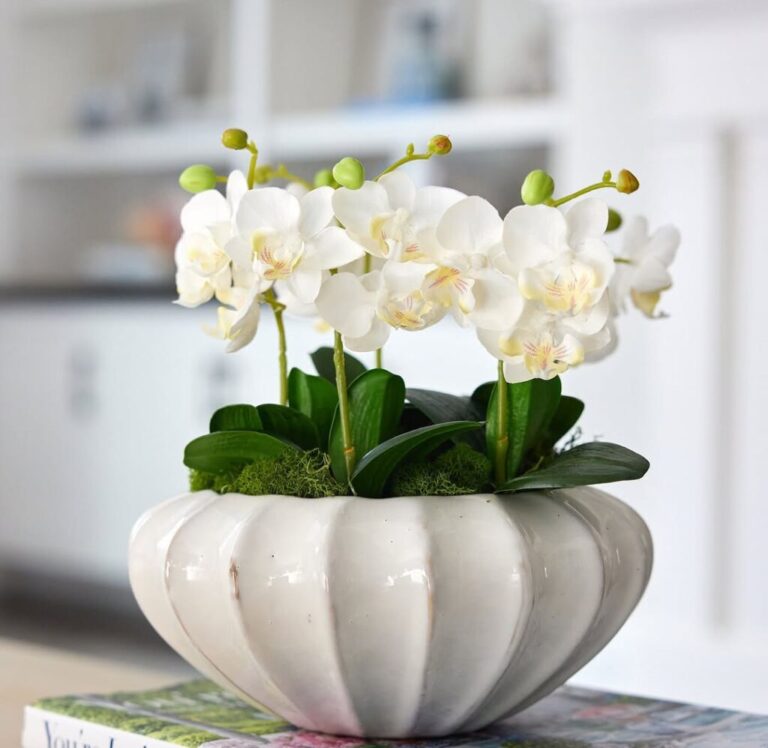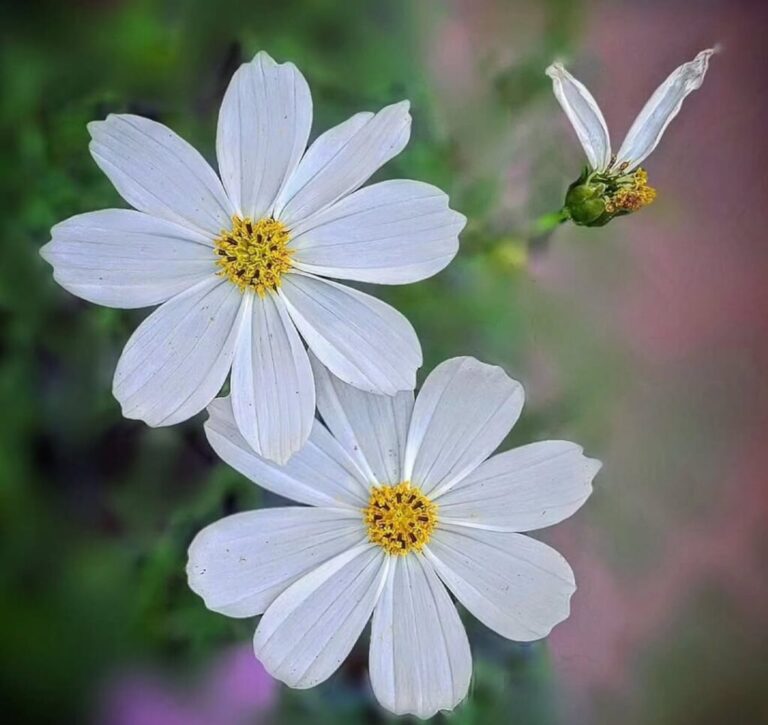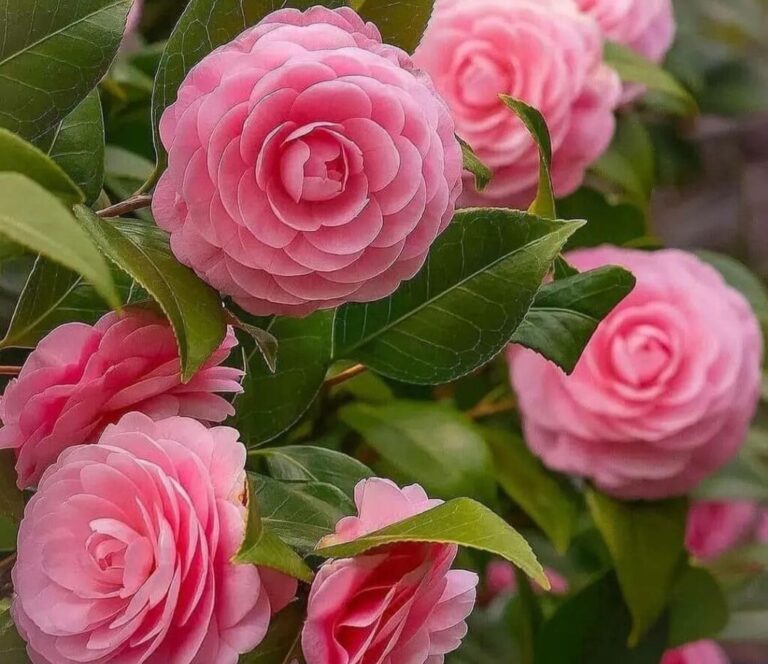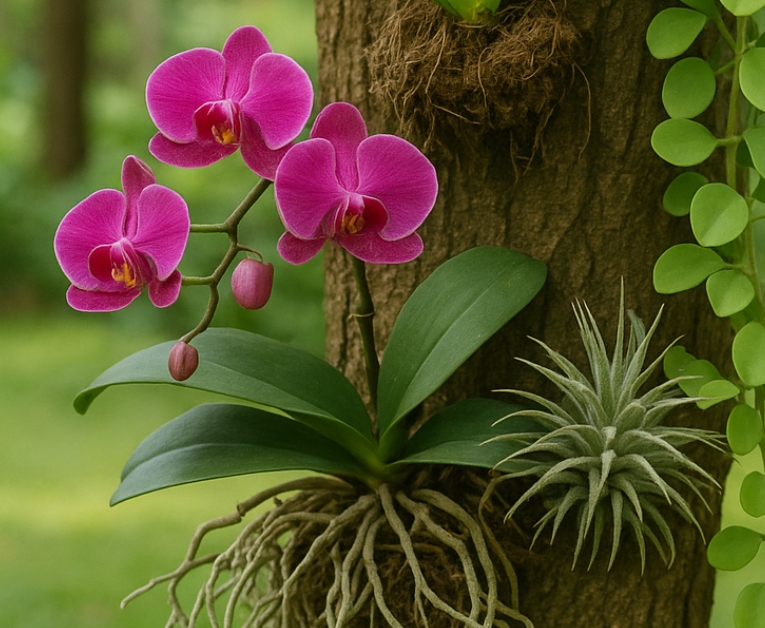Sticky leaves on Phalaenopsis orchids can be both puzzling and frustrating for orchid lovers. You’ve given your orchid the perfect spot, watered it with care, and admired its graceful blooms—yet suddenly, a sticky, shiny residue appears on the leaves. What does it mean? Is your plant in danger? Whether you’re a seasoned grower or a beginner nurturing your first orchid, discovering this sticky substance can raise many questions. Fortunately, you’re not alone—and more importantly, this issue is both diagnosable and treatable.
Phalaenopsis orchids, also known as moth orchids, are among the most popular and beginner-friendly types of orchids. Their stunning appearance and low-maintenance nature make them a favorite in homes and offices. However, like all plants, they communicate their distress through signs—sticky leaves being one of them. This residue is often overlooked or misunderstood, but it serves as an early warning signal that something isn’t quite right.
In this article, we’ll explore the four most common causes behind sticky leaves on Phalaenopsis orchids, from sap-sucking pests to environmental factors. You’ll learn how these causes affect your plant’s health, what symptoms to look for, and—most importantly—how to treat and prevent them. With the right care and timely action, your orchid can thrive once again with clean, glossy leaves and beautiful, lasting blooms.
Understanding the Sticky Situation: Sticky leaves on your orchid can be attributed to a few different factors, each with its own set of potential causes. Let’s explore some of the common reasons why your orchid’s leaves might be oozing a sticky substance.
Honeydew Secretion and Causes, Effects
Honeydew secretion is a sugary substance produced by certain insects as they feed on plants. These insects, which include aphids, scale insects, and mealybugs, use specialised mouthparts to pierce the plant’s tissue and extract sap, which contains water and nutrients. As a result of this feeding process, excess sugars are excreted by the insects in the form of honeydew.
Honeydew is often clear and sticky in nature, and it can accumulate on the leaves, stems, and other parts of plants. This secretion can cause several issues for plants:
Sticky Residue: Honeydew leaves behind a sticky residue on plant surfaces. This residue can make leaves feel tacky to the touch, and it can also attract dust and other debris, leading to a soiled appearance.
Sooty Mould: The sugary nature of honeydew makes it an ideal medium for the growth of sooty old. Sooty mould is a dark fungus that develops on the honeydew-coated surfaces of plants. It can interfere with photosynthesis by blocking sunlight and reducing the plant’s ability to produce energy.
Reduced Photosynthesis: When honeydew covers plant leaves, it can interfere with the process of photosynthesis, which is essential for a plant’s growth and vitality. Reduced photosynthesis can lead to weakened plants and reduced flower production.
Nutrient Imbalance: As insects feed on the plant’s sap, they extract nutrients along with the sugars. This can lead to a nutrient imbalance within the plant, which can further compromise its health.
To address honeydew secretion and its associated issues, it’s important to control the population of the insects responsible for producing honeydew. This can be accomplished using a variety of techniques, such as:
Physical Removal: Gently wiping affected leaves with a damp cloth can help remove honeydew and the insects producing it.
Insecticidal Soap: Using mild insecticidal soaps can help eliminate pests while minimising harm to the plant. Always abide by the product’s label directions.
Natural Predators: Introducing natural predators like ladybirds and lacewings can help control pest populations.
Pruning: If infestations are severe, pruning heavily affected areas may be necessary to prevent the spread of pests and honeydew.
By addressing the underlying insect infestations, you can effectively reduce honeydew secretion and its negative impacts on your plants’ health and appearance. Regular monitoring, proper care, and early intervention are key to maintaining a thriving garden or indoor plant collection.

Pest Infestations
Pest infestations occur when certain insects or organisms invade and proliferate within a plant or garden, causing harm to the plant’s health, growth, and overall well-being. Orchids, like any other plant, can fall victim to various pests that can disrupt their beauty and vitality. Here are some common pest infestations that can affect orchids:
Aphids: These tiny insects have soft bodies and come in various colors. They feed on plant sap by piercing the plant tissue with their mouthparts. Aphids reproduce quickly, leading to large colonies that can cause distortion of new growth, yellowing of leaves, and the production of honeydew.
Mealybugs:Mealybugs are tiny, soft-bodied insects that are coated in a waxy white material. They often cluster in hidden areas of the plant, such as leaf axils and crevices. Mealybugs feed on plant sap, weakening the plant and causing the leaves to yellow and distort.
Scale Insects: Scale insects are named for their protective, scale-like covering that shields them from predators. They attach themselves to plant surfaces and feed on plant fluids. As they feed, they excrete honeydew, which can lead to sticky leaves and the growth of sooty mould.
Spider mites: With the unaided eye, it is difficult to see these small arachnids. They feed by puncturing plant cells and extracting the contents, leading to stippling (tiny dots) on the leaves. Spider mite infestations can result in leaves turning yellow, drying out, and falling off.
Thrips: Thrips are slender insects that feed on plant tissue by rasping the surface and sucking out the contents. They can cause leaves to become discoloured, streaked, or speckled. In severe infestations, thrips can cause distorted growth and flower damage.
Whiteflies: These small, white insects resemble tiny moths and congregate on the undersides of leaves. Whiteflies feed on plant sap and excrete honeydew, leading to sticky leaves and the growth of sooty mold. They can also transmit plant viruses.
Addressing Pest Infestations and Solutions
Regular Inspection: Regularly inspect your orchids for signs of pests. Check the undersides of leaves, leaf axils, and other hidden areas where pests might congregate.
Isolation: If you discover an infested orchid, isolate it from your other plants to prevent the infestation from spreading.
Mechanical Control: Use a gentle stream of water or a soft brush to dislodge pests from plant surfaces.
Natural Predators: Introduce natural predators like ladybirds or predatory mites to control pest populations.
Insecticidal Soap or Oil: Use insecticidal soap or horticultural oil to control pests. Make sure to follow the instructions on the product label and avoid using these treatments during periods of extreme heat or direct sunlight.
Systemic Insecticides: Systemic insecticides can be applied to the soil, and the plant absorbs them to provide long-lasting protection against pests. Consult with a local gardening expert for recommendations.
Preventing pest infestations is crucial for maintaining the health and beauty of your orchids. Regular monitoring, proper hygiene, and appropriate care practices can help keep your plants pest-free and thriving.
Overwatering
Overwatering is a common issue that can have detrimental effects on orchids and many other types of plants. It occurs when plants receive more water than they can effectively absorb or when the roots remain constantly saturated. Orchids, known for their air roots and unique moisture requirements, are particularly susceptible to overwatering. Here’s why overwatering is problematic and how to prevent it:
Effects of Overwatering on Orchids
Root Rot: Orchids are epiphytic plants that often grow on trees or rocks in their natural habitat. Their roots need good air circulation to thrive. When they are consistently submerged in excess water, they can develop root rot, a condition caused by fungi that thrive in wet conditions. Root rot can lead to the decay of roots, making it difficult for the plant to absorb nutrients and water properly.
Yellowing Leaves: Overwatering can cause the leaves of orchids to turn yellow, wilt, or become mushy. The excess moisture prevents the roots from taking in oxygen, leading to poor nutrient uptake and overall stress on the plant.
Lack of Growth: Orchids that are overwatered often show stunted growth. The plant’s energy is diverted towards dealing with the excess moisture and potential root rot, leaving less energy for healthy growth and flower production.
Preventing Overwatering:
Potting Mix: These mixes usually contain components like bark, sphagnum moss, or perlite that allow excess water to drain away from the roots.
Pot and Drainage: Use a well-draining potting mix that has been specifically created for orchids. Choose a pot with drainage holes to prevent water from pooling at the bottom. Elevating the pot on pot feet can further enhance drainage.
Watering Frequency: Allow the top layer of the potting mix to dry out before watering again. Insert your finger about an inch into the mix—if it feels dry, it’s time to water. Avoid setting a fixed watering schedule, as orchid moisture requirements vary based on factors like humidity and light conditions.
Watering Technique: When watering, thoroughly soak the potting mix until water starts to drain from the bottom. Empty the saucer beneath the pot if excess water collects there.
Air Circulation: Ensure that your orchid’s growing environment has proper air circulation. Good airflow helps prevent moisture from lingering on the plant’s foliage and roots.
Humidity: Orchids benefit from higher humidity levels, but this doesn’t mean the potting mix should always be wet. Use humidity trays or a room humidifier to increase humidity without overwatering.
Monitoring: Regularly inspect your orchid’s roots and potting mix. If the roots appear brown, mushy, or have a foul odour, root rot might be present. Trim the affected roots and repot the orchid if necessary.
By understanding the specific needs of your orchid and paying close attention to its watering requirements, you can prevent overwatering and provide the optimal growing conditions for a healthy and thriving plant.
FAQ
What causes sticky leaves on Phalaenopsis orchids?
Sticky leaves on Phalaenopsis orchids are commonly caused by pests like aphids or scale insects. These pests secrete honeydew, which leaves a sticky residue. It’s important to inspect your orchid regularly, as sticky leaves on Phalaenopsis orchids can also signal fungal or bacterial issues that need immediate attention.
2. Are sticky leaves on Phalaenopsis orchids harmful?
Yes, sticky leaves on Phalaenopsis orchids can be a sign of underlying pest infestations or disease. Left untreated, they may weaken the plant, attract ants, and interfere with photosynthesis. Sticky leaves on Phalaenopsis orchids should be addressed early to prevent further damage and promote a healthy growing environment.
3. How can I remove sticky residue from Phalaenopsis orchid leaves?
To clean sticky leaves on Phalaenopsis orchids, use a soft cloth dampened with lukewarm water or a diluted neem oil solution. Gently wipe each leaf to remove the residue. Regular cleaning helps manage the symptoms and prevents the recurrence of sticky leaves on Phalaenopsis orchids.
4. What pests cause sticky leaves on Phalaenopsis orchids?
Common pests causing sticky leaves on Phalaenopsis orchids include aphids, scale insects, and mealybugs. These pests suck sap from the plant, leaving behind a sticky substance called honeydew. Managing these pests promptly is crucial to eliminate sticky leaves on Phalaenopsis orchids and ensure long-term health.
5. Can overwatering cause sticky leaves on Phalaenopsis orchids?
While overwatering doesn’t directly cause sticky leaves on Phalaenopsis orchids, it can lead to root rot and attract pests. Damp conditions make it easier for insects to thrive, which eventually leads to sticky leaves. Maintaining proper watering habits can help prevent sticky leaves on Phalaenopsis orchids.
6. Is honeydew the main reason for sticky leaves on Phalaenopsis orchids?
Yes, honeydew secreted by pests is the most common reason for sticky leaves on Phalaenopsis orchids. This sugary liquid not only causes the stickiness but can also lead to the growth of black sooty mold.Stopping sticky leaves on Phalaenopsis orchids requires treating the honeydew’s source.
7. How can I prevent sticky leaves on Phalaenopsis orchids in the future?
To prevent sticky leaves on Phalaenopsis orchids, inspect plants regularly for pests, maintain good air circulation, and avoid overwatering. Using natural repellents like neem oil also helps. A clean growing environment is key to keeping sticky leaves on Phalaenopsis orchids from returning.
8. Do sticky leaves on Phalaenopsis orchids mean my plant is dying?
Not necessarily, but sticky leaves on Phalaenopsis orchids are a warning sign. If ignored, they can lead to more serious issues. Addressing the problem early—by removing pests and improving care—can restore the health of orchids showing sticky leaves on Phalaenopsis orchids.
9. Can sticky leaves on Phalaenopsis orchids attract other insects?
Indeed, Phalaenopsis orchids’ sticky leaves have the ability to draw ants and encourage the growth of mould.The sugary honeydew left by pests is a food source for many insects. Keeping sticky leaves on Phalaenopsis orchids clean is essential for avoiding further infestations and maintaining plant health.
10. Should I cut off sticky leaves on Phalaenopsis orchids?
Only remove sticky leaves on Phalaenopsis orchids if they are severely damaged or show signs of rot. In most cases, gently cleaning and treating the plant will save the leaf. Pruning should be a last resort when managing sticky leaves on Phalaenopsis orchids.
11. Can sticky leaves on Phalaenopsis orchids affect flowering?
Yes, sticky leaves on Phalaenopsis orchids can stress the plant, making it harder for blooms to form or last. Pests that cause stickiness also divert nutrients away from the flowers. Healthy leaves are essential for vibrant blooms, so addressing sticky leaves on Phalaenopsis orchids is crucial for successful flowering.
12. Is it safe to use insecticidal soap on sticky leaves on Phalaenopsis orchids?
Insecticidal soap is generally safe and effective for treating sticky leaves on Phalaenopsis orchids, especially if pests are the cause. Always test on a small area first to avoid leaf damage. Regular applications help eliminate the sticky residue and control pests, resolving sticky leaves on Phalaenopsis orchids over time.
13. Can sticky leaves on Phalaenopsis orchids spread to other plants?
Yes, if the cause is a pest infestation, sticky leaves on Phalaenopsis orchids can lead to pests spreading to nearby plants. The honeydew can also promote mold growth that affects nearby foliage. Isolating affected orchids helps prevent sticky leaves on Phalaenopsis orchids from impacting your entire collection.
14. What role does humidity play in sticky leaves on Phalaenopsis orchids?
High humidity doesn’t directly cause sticky leaves on Phalaenopsis orchids, but it can encourage pests and fungal growth. Proper ventilation helps keep humidity at healthy levels. Managing humidity is one of the preventive steps you can take to reduce the risk of sticky leaves on Phalaenopsis orchids.
15. Are sticky leaves on Phalaenopsis orchids common in indoor environments?
Sticky leaves on Phalaenopsis orchids are more common indoors due to stagnant air and less frequent inspection. Indoor environments can create ideal conditions for pests if orchids aren’t monitored. Keeping an eye on leaf health helps prevent and treat sticky leaves on Phalaenopsis orchids before they worsen.
What causes sticky leaves on Phalaenopsis orchids?
Sticky leaves on Phalaenopsis orchids are often caused by the presence of sap-sucking insects like aphids, mealybugs, or scale insects. These pests excrete a sugary substance called honeydew, which makes the leaves sticky.
What effects can sticky leaves have on Phalaenopsis orchids?
Sticky leaves can lead to a variety of issues for Phalaenopsis orchids. The honeydew excreted by pests can attract mold, fungi, and bacterial growth, which can further harm the plant. Additionally, sticky leaves can reduce the plant’s ability to perform photosynthesis and lead to a decline in overall health.
How can I address the issue of sticky leaves on my Phalaenopsis orchids?
To address sticky leaves, first identify and remove the pests causing the problem. Use a gentle stream of water or a soft brush to wash off the honeydew and pests. For severe infestations, you may need to use insecticidal soap or neem oil, following the instructions carefully. Once pests are eliminated, clean the leaves and monitor the orchid regularly.
How can I prevent sticky leaves on my Phalaenopsis orchids in the future?
Regularly inspect your orchids for signs of pests. Keep your orchid environment clean and well-ventilated. Avoid over-fertilising, as excess nutrients can attract pests. Quarantine new plants to prevent introducing pests to your collection. Monitoring and maintaining good orchid care practices will help prevent sticky leaves and pest infestations.


